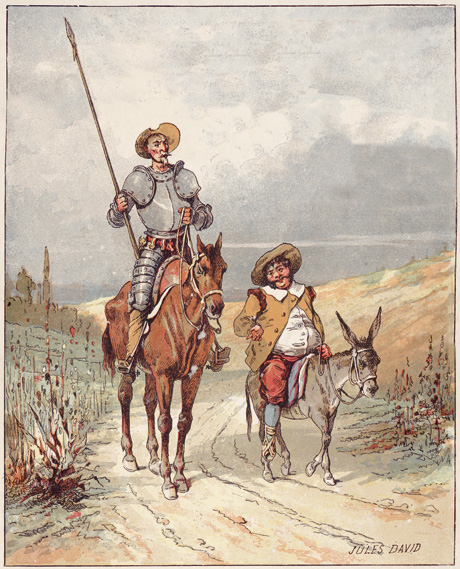Firstly, thanks for your patience and spirited debate on the merits of various recordings so far....
...and secondly I will begin our discussion on
Don Quixote, or
Phantastische Variationen über ein Thema ritterlichen Charakters (Fantastic Variations on a Theme of Knightly Character) if you prefer...
Strauss completed
DQ in 1895 during a period when he was feted in the main for his tone poetry. Chronologically
DQ falls just after
Also sprach Zarathustra, and before
Ein Heldenleben. Although not a concerto per se, it does contain detailed parts for solo cello (representing the character of Don Quixote) and solo viola (plus tuba) (Sancho Panza). As often as not you will see the section leaders of the orchestra playing these parts - although some of the previous posts also remind us that cello
virtuosi have also coveted the role of Don Quixote.
Cervantes orginal novel which provides the source material was published early in the 17th century. I won't bog us down in the 'plot', but a summary is useful. To assist with this I summon forth Wikipedia:-
http://en.wikipedia.org/wiki/Don_Quixote_de_la_Mancha
The key points regarding character are that Don Quixote himself is a Spanish gentleman from La Mancha who, taking the chivalric novels he devours as read, decides to set off on misguided adventures of his own as a knight-errant. Don Quixote is a character who, in the area of chivalry, experiences a blurring between reality and fantasy. Sancho Panza is a simple man who takes on the role of Don Quixote's manservant on the (false) basis that he will be offered governorship of an island. When the two get together, adventures ensue....

Instrumentally Strauss employs a fairly large romantic orchestra as follows -piccolo, 2 flutes, 2 oboes, English horn, 2 clarinets in B-flat (2nd doubling clarinet in E-flat), bass clarinet, 3 bassoons, contrabassoon, 6 horns in F, 3 trumpets in D and F, 3 trombones, tenor tuba in B-flat, tuba , timpani, bass drum, snare drum, cymbals, triangle, tambourine, wind machine (!), harp, violins, violas, cellos and double basses.
After a brief introduction the piece settles into a set of variations on a theme, which cherry pick key episodes from the novel. I will go through the work in manageable sections using the Reiner recording below: the soloists are John Weicher (cello) and Milton Preves (viola).

Introduction Don Quixote loses his sanity after reading novels about knights, and decides to become a knight-errant
The introduction doesn't settle into any particularly discernable theme but, as inidcated in the subtitle, has plenty of heroic horn calls to represent the knightly delusion, and skittering strings which remind us that Don Quixote may not be of sound mind. As far as I can judge this is a spirited and effective introduction. Initially it bounces along quite merrily, and then serene, until the aforementioned horn and strings interrupt the painstakingly evoked pastorale mood. My initial thinking is I have been too hard on poor old Richard Strauss. We shall see...




